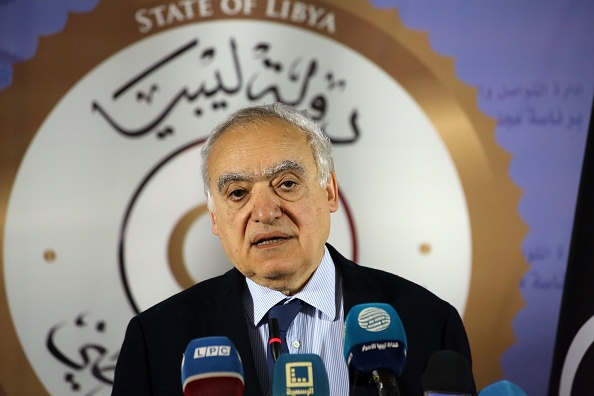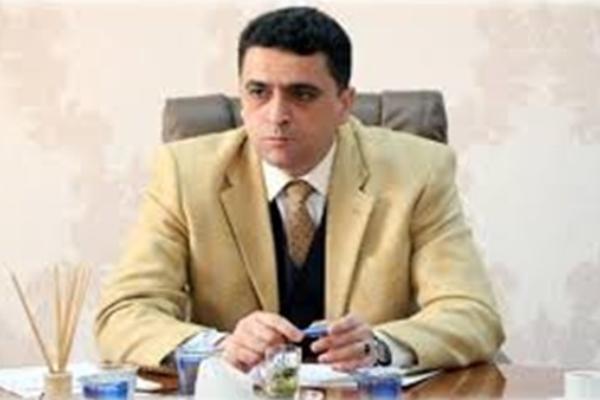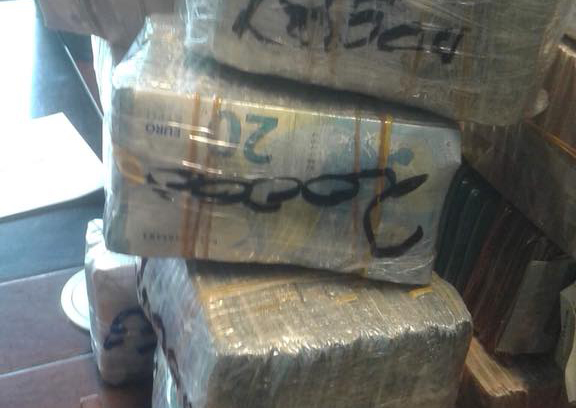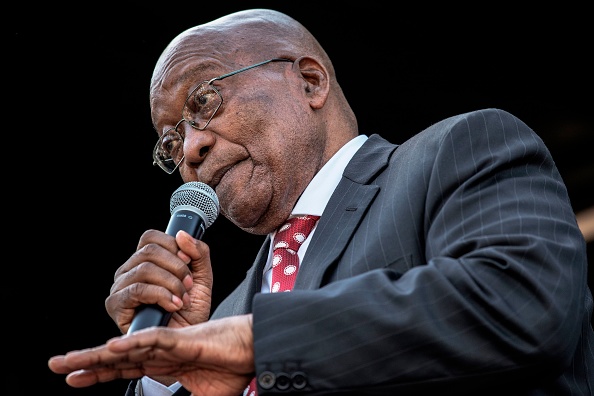- Ghassan Salame: “There is a new millionaire every day in Libya, and the middle class is shrinking day by day …and the political class is shamefully corrupted.”
- Transparency International: There is a significant increase in the level of corruption in Libya, which was ranked 172 among the 177 most corrupt countries.
- Head of the Libyan Audit Bureau: Libya has gone beyond the corruption phase and is now underestimating allocation of it public money.
Tripoli- Libya’s smuggled or frozen funds, which include billions of dollars in cash, bonds, deposits, large hotels, lands, yachts, luxury cars, and private planes, are all owned by Libyans who can’t benefit from them. Libyan authorities don’t know the sum of the funds that were “looted and smuggled” abroad. Furthermore, the authorities don’t announce a total of smuggled assets published in official reports.
This report will cover Libyan-state owned liquid funds, consisting of money, deposits, gold, and precious stones, of which only the Central Bank of Libya in Tripoli is allowed to handle.
It will also follow up on funds in the form of investments that are owned and handled by the Libyan Investment Corporation (LIC), which includes five affiliated institutions, collectively comprising the large Libyan investment portfolio.
These institutions are: The Libyan Arab Foreign Investment Company (LAFICO), Long Term Investment Portfolio (LTP), OilInvest Group, Libyan Local Investment, and Development Fund (LLIDF) and Libyan Africa Investment Portfolio (LAP, LAIP).
INDICATIONS OF FINANCIAL CORRUPTION AFTER 2011
The years of intense chaos and corruption has caused United Nations special envoy to Libya, Ghassan Salame, to describe this rampant financial corruption in Libya and confirm its existence.
“There is a new millionaire every day in Libya, and the middle class is shrinking day by day” Salame noted on March 27. The political class, he added, is shamefully corrupt and fortunes collected from political ranks are being invested abroad.
“Politicians in Libya seize public money and invest it overseas.”
Salame didn’t only describe the situation but also threatened (in an implicit diplomatic way) political figures and others who have been looting Libya’s money.
“Time has come for all parties to stop holding on to a position that will enable them to acquire wealth,” he said.
Before Salame’s diplomatic rhetoric, former finance minister Hassan Ziglam warned in February 2012 of this situation.
“The ban on the frozen funds has been lifted,” he said in a televised interview. “These funds were brought to Libya and smuggled overseas through all land, sea, and airports.”
He threatened back then to resign, and he addressed Libyans with much regret to make things clear. “The total amount of frozen Libyan assets smuggled abroad amounted to more than $100 billion.”
“These funds were supposed to be primarily allocated to the reconstruction program and contracting with a number of companies. As such the funds would go towards the maintenance and rebuilding of schools, hospitals, universities, police headquarters, departments and state institutions , which were vandalized and destroyed during the revolution, in addition to completing some projects, especially airports,” Ziglam explained, adding that they were, however, smuggled out through airports, seaports and land ports.
“Libyan people’s money is being smuggled abroad, and Libyans should demand freezing them again,” he concluded.
Ziglam’s disappointing remarks were confirmed by the former head of the executive board of the National Transitional Council Mahmoud Jibril.
“The amount of money looted after February 17 exceeds what has been looted over the past 42 years,” he said in an appearance on one of the TV channels.
Former Minister of Health Fatima Hamroush, for her part, told Irish Times Newspaper she has documents that prove $1.5 billion have been embezzled out of the country.
At the international level, “there is a significant increase in the level of corruption in Libya, which was ranked 172 among the 177 most corrupt countries,” said a report issued by Transparency International late March 2013.
At the local level, however, Head of the Libyan Audit Bureau, Khalid Shakshak, affirmed in a voice recording from late 2014 that Libya has gone beyond the corruption phase and is now underestimating allocation of public money.
“The budget for 2013 amounted to more than $70 billion, yet there was no remarkable improvement in the country.”
“Sick Libyans receive treatments abroad despite the seven billion dollars spent on the health sector, and the state is unable to protect its borders and facilities despite spending seven billion dollars on the Ministry of Defense,” explained Shakshak.
In humble attempts to reduce corruption and tampering with Libyan millions, Shakshak issued urgent decisions to prevent officials from pursuing their work in certain banks and ordered concerned authorities not to assign them any future leadership work.
Among these officials are the general manager of the Republic Bank and director of credit risk management department at the same bank. He also fired deputy director of the Republic Bank’s branch in al-Fallah along with director of the North Africa Bank at Zliten’s branch.
Shakshak later issued an urgent decision to freeze the bank account s of 38 companies and 62 individuals for being involved in the smuggling of foreign exchange currencies and falsification of official documents.

HISTORICAL BACKGROUND OF FUND SMUGGLING
The first chapters of smuggling of Libyan funds began outside its borders in the early 1980s when the Libyan government establishing the Libyan Arab Foreign Investment Company (LAFICO).
LAFCO served as the regime’s powerful arm after an economic and air blockade were imposed on it, and its funds were frozen following a decision by the Security Council, which accused it of being involved in a number of international terrorist acts.
Other companies and economic entities were established after LAFCO and became a parallel financial system, substituting the Central Bank of Libya.
This parallel system included billions of dollars invested by Libyans in more than 45 countries in Europe, Africa and the rest of the world. It put funds in foreign banks either publically or secretly.
The regime sold oil, bought arms, invested its money and smuggled it overseas through this virtual system without being exposed because these operations weren’t part of the recognized official framework.
After bitter patience on a nearly 10-year economic siege, former Muammar Gaddafi’s regime succeeded in resolving many of the outstanding issues between it and the West, the latter of which had imposed an air embargo, economic sanctions on the former. The West had also frozen Libyan funds in foreign banks and stressed a ban on exporting Libyan oil.
In March 2003, the Libyan government embarked on real and serious steps to achieve comprehensive economic reforms in the country. This started with the appointment of Dr. Shukri Mohammed Ghanem as Prime Minister to lead and oversee the implementation of these reforms. To some extent, he did succeed in said tasks. Before the end of 2003, the Libyan regime fully implemented the West’s demands and seemed to be on a path of renewed relations with the international community. During that short period of time, Libya had paid the compensation demanded, gave up its nuclear program and promised political and economic reforms.
Previous conditions in Libya helped it establish the Libyan sovereign investment fund in the same year at a rate of 60 billion dollars with the purpose of moving Libya from its bitter reality to a better one.
Sources pointed out that at the beginning of 2010, the Libyan government issued more than 20 new laws, bringing about comprehensive changes in trade, customs, income taxes, stock exchange, labor, communications, and real estate documentation.
Being politically and economically competent, Ghanem led the regime’s reforms as premier from 2003 to 2005 and as chairman of Libya’s National Oil Corporation (NOC) from 2005 to 2011. After the 2011 uprising, he fled to Italy and then to Austria, where the police found his corpse floating in the Danube River in Vienna on April 30, 2012.
In January 2005, US companies returned to invest in Libyan oil after a 20-year ban. In May 2006, the US administration announced fully restoring diplomatic relations with Libya.
Libya, its oil and its openness to the world turned it into an investment haven for many European countries.
“Following the lifting of earlier United Nations (UN) sanctions in 2003, economic activity increased steadily for seven years,” said a report by the International Monetary Fund (IMF) early 2012, pointing out that during 2004–10, average real GDP growth was approximately five percent.
“Annual consumer price inflation averaged less than four percent, and official foreign assets increased from $20 billion at the end of 2003 to $170 billion at the end at 2010,” the report added.
All in all, Libyans’ conditions began to change internally, and they started dreaming of a different Libya. This dream would never come into fruition as 2011 arrived and with it came the Arab Spring revolutions. Libyans would revolt against the regime and the West would support the revolt, which ultimately led to the collapse of Gaddafi’s rule.

WILL LIBYA’S BILLIONS EVER RETURN?
Prior to the 2011 uprising, Gaddafi denied having a single dollar to his name outside Libya, which was not true. Before allowing NATO forces to intervene militarily and end Gaddafi’s rule, the Security Council issued in February 28, 2011 resolution 1970, in which article 17 stipulates that all Member States shall freeze without delay all funds, other financial assets, and economic resources which are on their territories, which owned or controlled, directly or indirectly, by the individuals or entities listed in Annex II of this resolution or designated by the Committee established pursuant to paragraph 24 below, or by individuals or entities acting on their behalf or at their direction, or by entities owned or controlled by them, and decides further that all . In other words, any foreign assets belonging to people listed in Annex II, should be frozen by the respective Member States should any of said assets exist within their jurisdictions.
The people listed in Annex II included Ayesha Gaddafi, Hannibal Muammar Gaddafi, Khamis Gaddafi, Muammar Gaddafi, Mutassim Gaddafi, and Saif al-Islam Gaddafi.
In March 2011, resolution 1973 was issued to affirm all that was stipulated in resolution 1970, adding an article through which assets of Gaddafi’s sons Mohammed and Saadi Gaddafi shall be frozen in addition to assets belonging to Colonel Abdullah al-Senussi, Abu Bakr Yunis Jabir, Abu Zayd Umar Dorda and Matuq Mohammed Matuq. It also stipulated freezing assets of five Libyan institutions and financial entities, which are Central Bank of Libya, Libyan Investment Authority, Libyan Foreign Bank, Libyan Africa Investment Portfolio and Libyan National Oil Corporation.
In response to these harsh measures, Gaddafi told a French journalist in his tent in Tripoli on March 5, 2011, he doesn’t have money abroad and challenged the world to prove the opposite.
When the regime was overthrown and before Gaddafi’s death, the National Transitional Council and the Executive Council governed Libya temporarily until democratic elections were held and a new Libyan government was formed.
Before holding the elections and forming the awaited government, both bodies’ main concern was restoring Libya’s frozen funds and assets that were owned by Gaddafi. Both councils were persistent and urgently demanded that the Security Council release these funds to ensure payment of Libyan worker salaries and to activate basic services in the country. They requested the release of five billion dinars, but the Security Council released only LYD1.5 billion.
In exchange for a promise of democratic transition, the Security Council released $15 billion in early September 2011. This amount is small compared to Libya’s frozen billions that are officially registered to Libya’s Central Bank and its Investment Corporation. It should also be noted that the fictitious accounts registered to Gaddafi’s family and those close to his tent and are still unknown.
Farhat Bengdara was the first Libyan leader to explain to Libyans about the amount and reality of frozen and smuggled funds outside Libya, being the last governor of its Central Bank during Muammar Gaddafi's rule from 2006 to March 12, 2011.
“Libyan assets are estimated at 168.425 billion, of which about 104 billion are to the central bank. These 104 billion are distributed as following: about $40 billion in cash, about $30 billion as US Treasury bonds and bonds in European governments, and the rest are distributed on loans given to foreign countries and some investment portfolios managed by others serving the interest of the Central Bank. In addition, about $64 billion are given to the Libyan Investment Corporation,” explained Bengdara in an interview with a TV station.
Reuters news agency, for its part, published on August 31, 2011, a detailed report on Bengdara’s remarks. It showed that a number of foreign governments have frozen Libyan sovereign funds, which is estimated to be at $150 billion and 144 tons of gold, as well as 1.2 billion euros deposited in Austrian banks and 12 billion pounds in Britain. Of said funds, Saif al-Islam Gaddafi owns $10 billion alone.
Banks in Canada have $2.3 billion worth in Libyan funds while those in France have 6.7 billion euros and more than seven billion euros are in Germany, according to the Reuters’ report. The report also added that Italy has eight billion dollars while Switzerland has $827 million and the United States has about $34 billion worth in frozen funds in its banks.
After the fall of Muammar Gaddafi's regime, these funds and assets were requested by Libya’s officials throughout the country’s successive governments. They tried all possible legal and illegal means to recover these funds and unfreeze them.
Attempts started with the two councils, which repeatedly appealed to the Security Council and requested the release of these funds, followed by secret visits to some countries having billions of dollars in frozen in their banks. Additionally, a large number of committees have been established since the Transitional Council took over, all intended to retrieve frozen funds from banks abroad.

President of the General National Congress (GNC), Mohamed al-Magariaf established one of the more farfetched means for fund recovery. He called for the forming of technical committees which would search for these smuggled funds abroad. Any individual within the committee that recovered the funds would be awarded 10 percent of the retrieved assets. For instance, if a person within the committee or the entire committee would recover 10 billion dollars’ worth of funds; he or the committee would be rewarded 10 percent of those 10 billion dollars, which would equate to a billion dollars. The policy was met with some criticism as many observers of Libyan affairs considered this decision a means of legalizing corruption by the country’s top legislative authority.
SOUTH AFRICA: THE TREASURE CHEST OF LIBYAN FUNDS?
Reporting on the Libyan assets smuggled into South African provinces is quite complex since there is a lot of conflicting information on the exact amount of funds hidden within Libya’s continental neighbor. However, most experts agree that Bashir Saleh Bashir is the key to finding these hidden funds since he owns a large share of the assets.
After Gaddafi’s death, his secret-keeper, Bashir, was arrested. But those who wanted the recovery of the funds knew that Bashir would only give information if he was freed. For this reason, he was released from the Elysee Palace and from there he was meant to head directly to Tripoli. However, after spending two nights at the finest Champs-Elysées’ hotel he traveled to Johannesburg and settled there with his smuggled money. He was subjected to an assassination attempt which was thwarted as his death meant the evaporation of Libya’s billions in South Africa. Bashir was Gaddafi’s secret keeper and director of his office since the late 1990s. He then became head of Africa’s Libyan Investment Fund until 2011.
Despite all this speculation, the only person who could confirm the true figure of the embezzled funds in South Africa was their former president Jacob Zuma.
Responding to questions by members of his government's parliament about Gaddafi's hidden funds, Zuma told the whole world on July 8, 2013, that none of the Libyan officials has provided South Africa with evidence on the transfer of these assets and funds to South Africa.
“Those who have evidence should hand them over to the relevant Libyan authorities or the United Nations ... We have not found any funds, and if any of those Libyan funds or assets were found in South Africa, we will immediately inform the United Nations through the Department of International Relations and Cooperation,” he said.

Zuma’s message was over, and Libya’s billions are still buried in his country, which is a clear sign that they may not return to the Central Bank of Libya any time soon, or ever for that matter.
The media largely ignored the issue of Libyan money in South Africa for a while, however, a recent article in the Sunday Times revealed that before his death, Gaddafi smuggled 30 million US dollars to former President Jacob Zuma’s bunker at his home Nkandla. The funds were discovered recently as the president was moving them out of South Africa to Estwani. Jacob Zuma had previously denied the existence of embezzled Libyan money in South Africa, but it appears now that the disgraced former president will have another scandal to answer for.
As much as he tried to hide the assets, many in the international community had known about his possession of Libyan funds for years. For instance, the Guardian reported that since 2011 former US Secretary of State, Hilary Clinton, had known about Gaddafi and Zuma’s plans to smuggle the former’s funds out of Libya.
Clearly, the issue of embezzled funds from Libya is a complex one that will only be resolved with a coordinated effort from the international community, but as it stands the Libyan government will have to find ways to improvise the reconstruction process.








